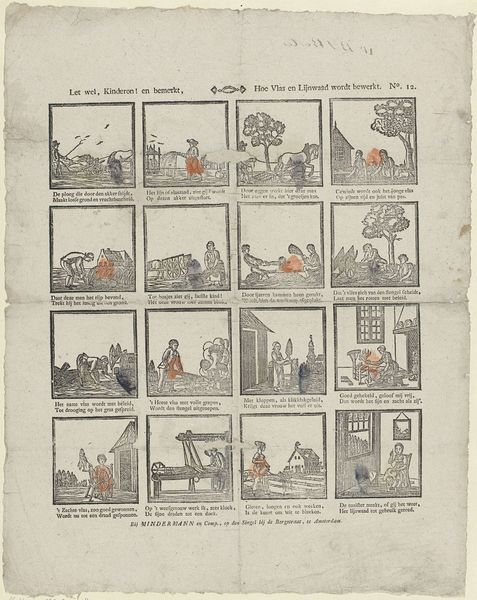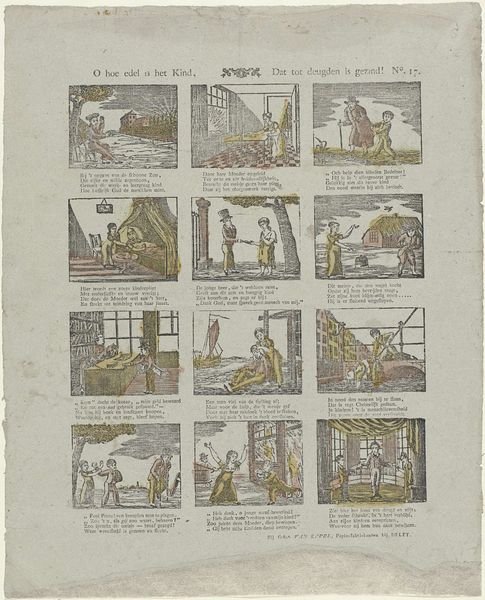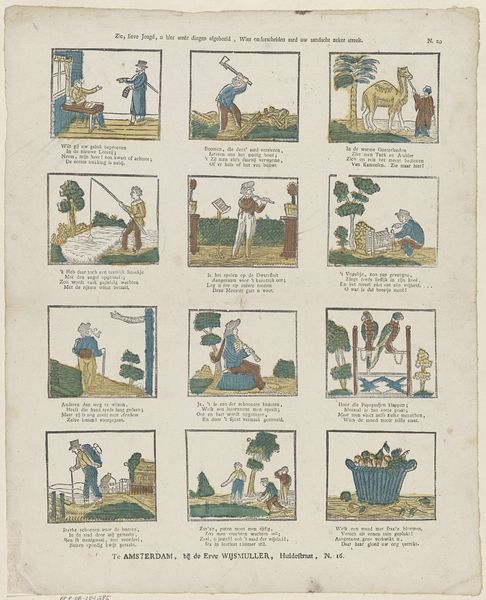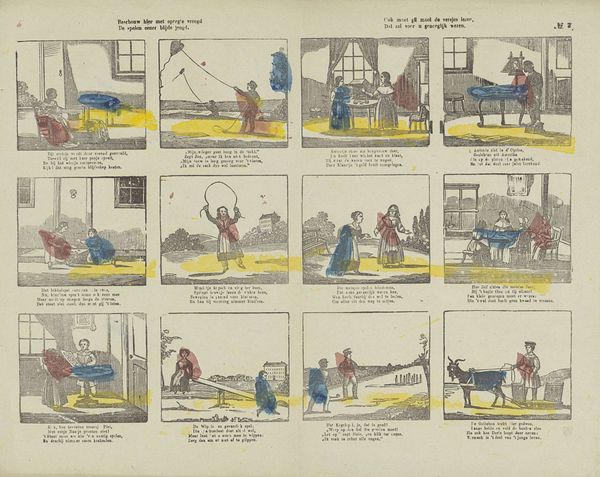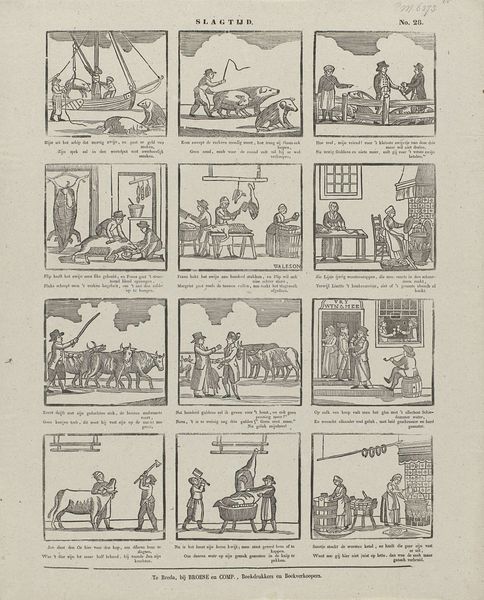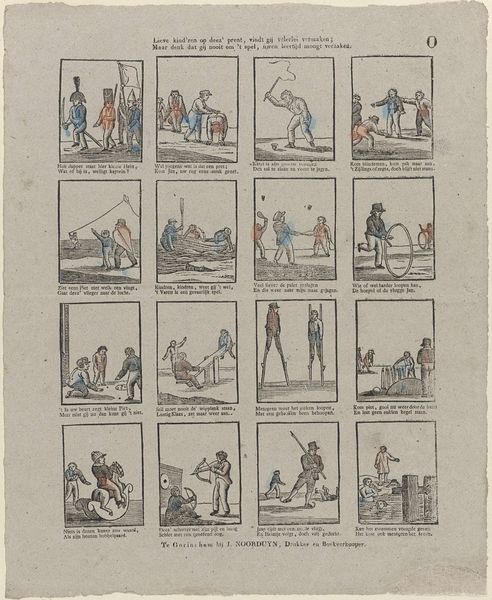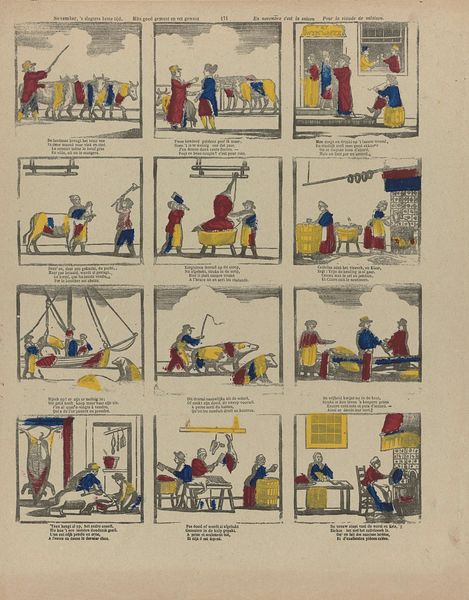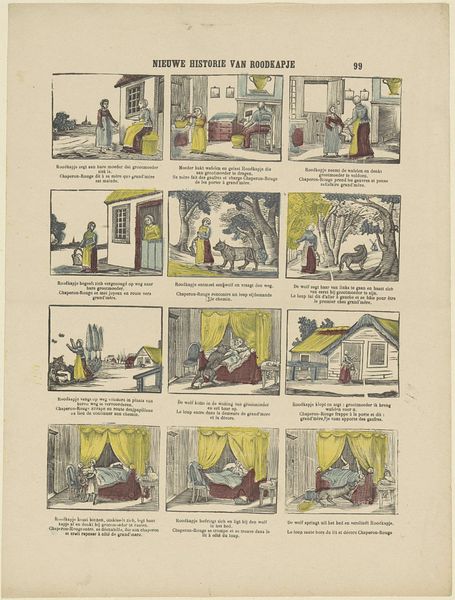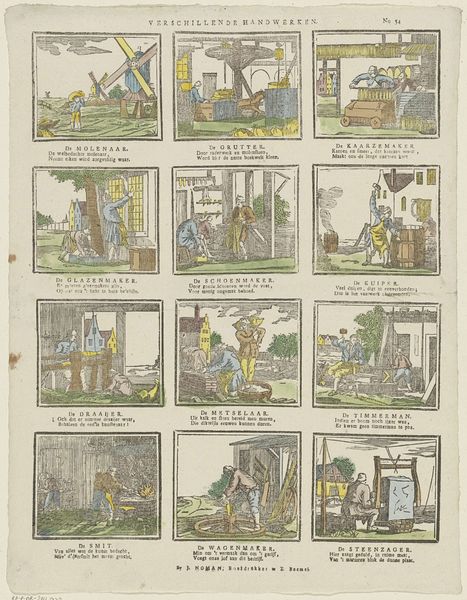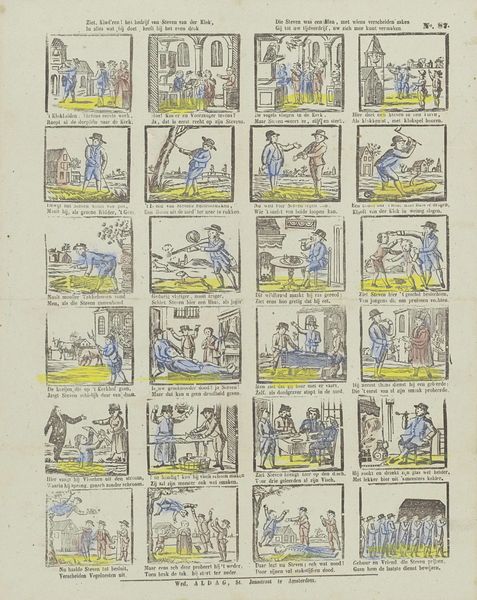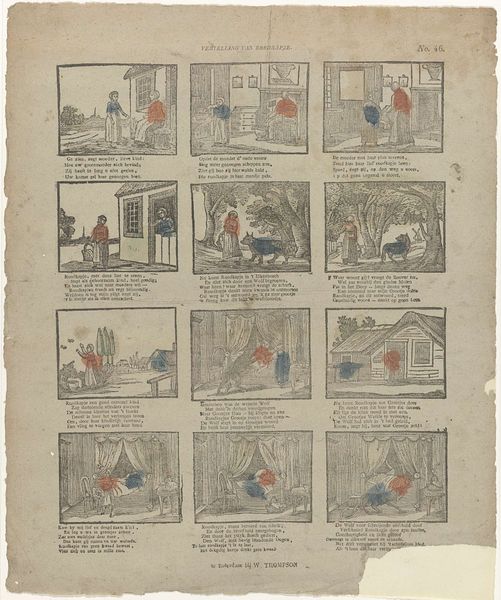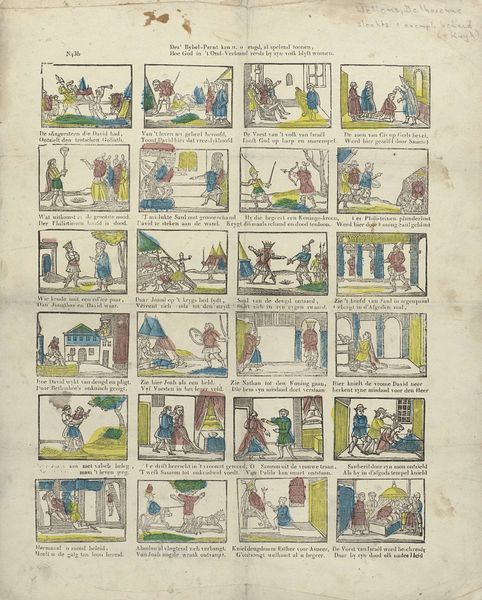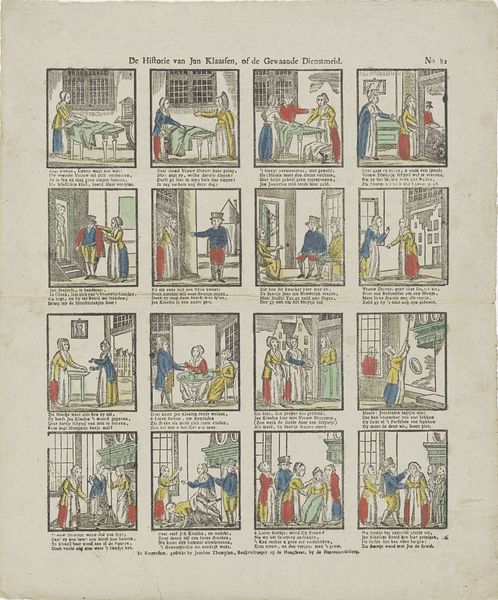
Let wel, kinderen! en bemerkt, / Hoe vlas en lijnwaad wordt bewerkt 1820 - 1838
0:00
0:00
drawing, print, weaving, ink
#
drawing
#
narrative-art
# print
#
weaving
#
ink
#
folk-art
#
comic
#
genre-painting
Dimensions: height 426 mm, width 344 mm
Copyright: Rijks Museum: Open Domain
Curator: At first glance, this piece feels quaint and instructional, like a visual guide from a bygone era. There's a definite storybook quality to it. Editor: Indeed. What we're observing is "Let wel, kinderen! en bemerkt, / Hoe vlas en lijnwaad wordt bewerkt," a print drawing in ink by Christiaan Jacob Schuyling, created sometime between 1820 and 1838. Its title translates to "Take note, children! and notice / How flax and linen are processed." The print uses a comic strip structure with the purpose of instructing. Curator: Yes, the grid structure immediately creates a sense of order and narrative flow. The lines are clean, and the compositions within each panel are simple, almost elemental. Look at how the limited color palette—mostly subdued greens and browns—enhances the work’s sense of clarity. The drawing highlights its graphic quality; I find the materiality of the work quite beautiful. Editor: Considering its historical context reveals additional layers. Schuyling likely intended this as an educational tool, framing labor processes for children within a developing capitalist system. Each step is neatly visualized: plowing, harvesting, spinning, weaving—connecting these manual activities to larger themes of industry and societal progress. The final image of the woman and the completed cloth symbolizes the result of all these processes; It's also a direct visual link to labor as women’s work, and the domestic as inherently tied to larger markets. Curator: The simplification of form also aids legibility; this piece could be decoded easily even without any knowledge of reading, emphasizing the idea of universality through accessible imagery. It speaks volumes about how a straightforward formal technique facilitates understanding—almost like an early infographic, in a way. Editor: Exactly! This points to something crucial: how art can shape and transmit cultural values and encode different forms of labor within a given culture. Schuyling gives us more than a glimpse into a way of seeing labor and production in the Netherlands in the early 19th century; his art illuminates the connection between aesthetics and the political, economic and societal currents that flow beneath them. Curator: Absolutely, observing these narrative decisions offers insights into this artist's methods of conveying knowledge through careful sequencing. Editor: And by acknowledging those artistic choices, we’re equipped to confront what his didactic cartoon reflects.
Comments
No comments
Be the first to comment and join the conversation on the ultimate creative platform.
